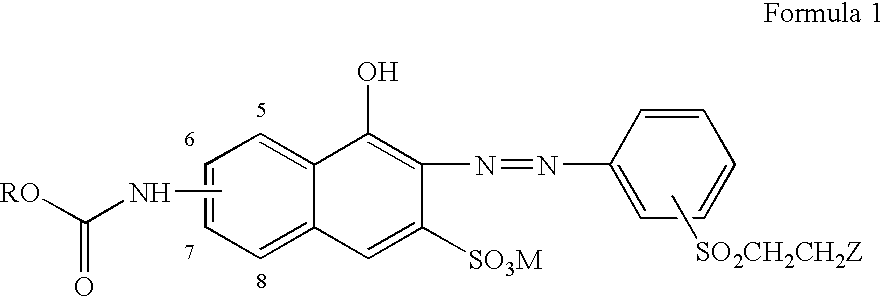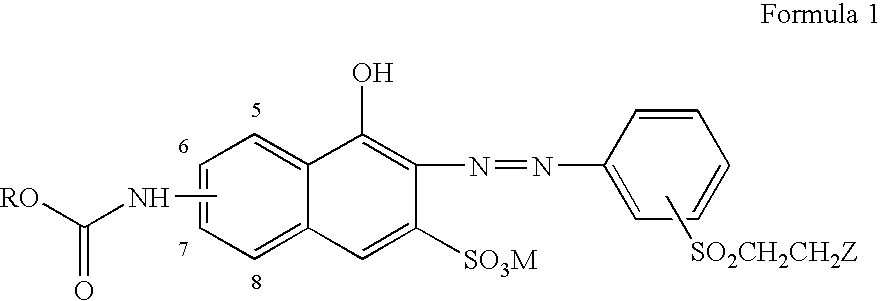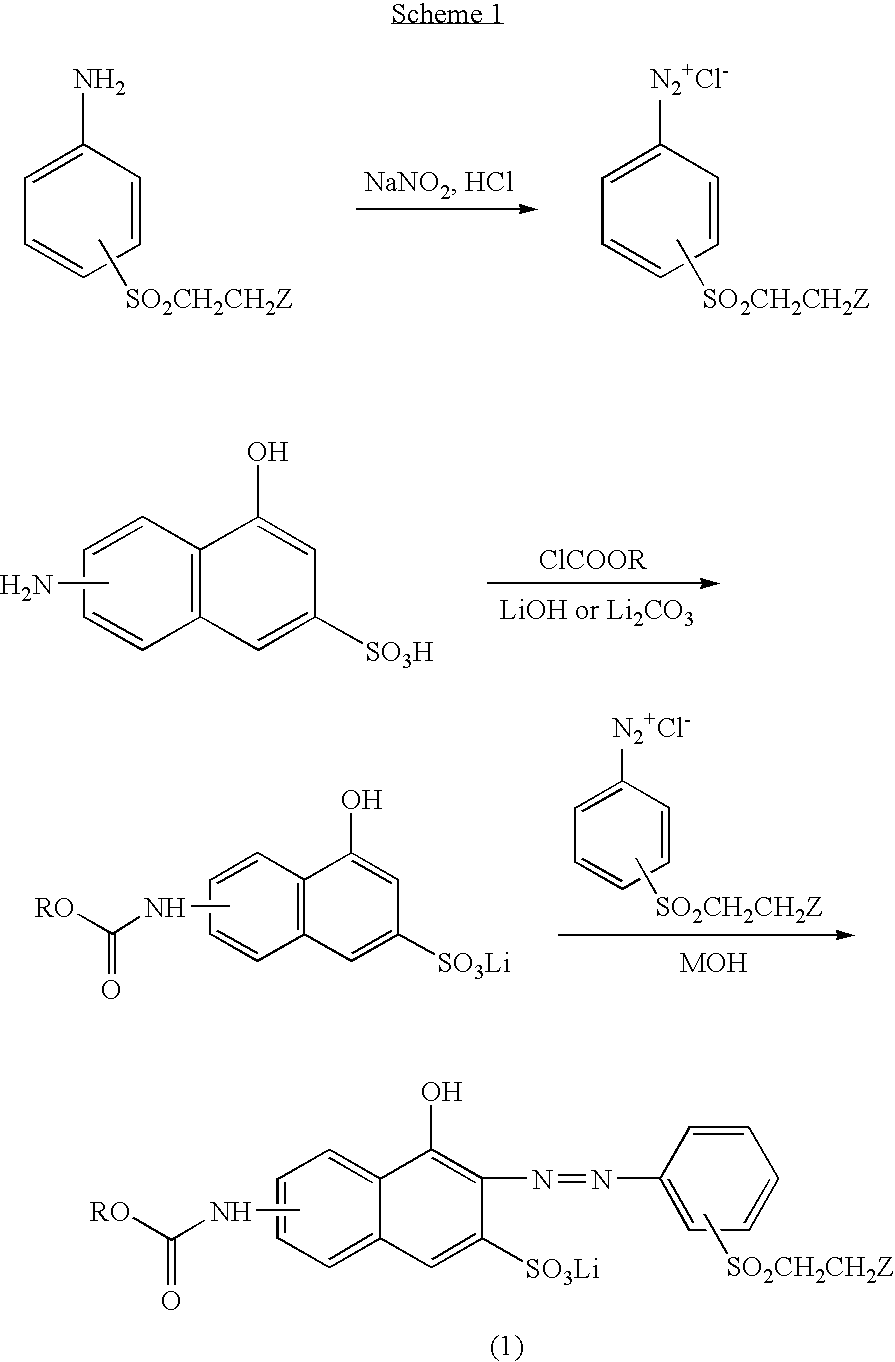Reactive orange dyes containing vinyl sulfones
- Summary
- Abstract
- Description
- Claims
- Application Information
AI Technical Summary
Benefits of technology
Problems solved by technology
Method used
Image
Examples
example 1
[0018]First, 8.44 g(0.03 mol) of 4-aminophenyl-β-sulfatoethylsulfone was dispersed in 70 ml of water and after the dropping of NaNO2 (10.5 ml), the temperature was adjusted to 0–5° C., followed by the addition of ice (100 g). Then, 6.52 ml of 35% HCl was added to diazonate and excess of nitrous acid was removed with the addition of sulfamic acid.
[0019]60 ml of H2O was added to 7.18 g (0.03 mol) of 6-amino-4-hydroxy-2-naphthalene sulfonic acid and was then neutralized with 15 ml of aqueous solution of 2N LiOH, after which pH was adjusted to 5.5–6.0 with 2N HCl, followed by the addition of 30 g of ice. Thereafter, 3.58 g (0.033 mol) of ethyl chloroformate was slowly added to the reaction mixture in the presence of aqueous solution of LiOH for adjusting pH to be 3–6, which leads to condensation reaction. After the completion of the above reaction, salting-out and filtering was carried out following the adjustment of pH to 6.
[0020]Thereafter, the condensed solid of ethyl chloroformate i...
example 2
[0022]First, 7.30 g(0.03 mol) of 4-aminophenyl-β-acetoxyethylsulfone was dispersed in 70 ml of water and after the dropping of NaNO2 (10.5 ml), the temperature was adjusted to 0–5° C., followed by the addition of ice (100 g). Then, 6.52 ml of 35% HCl was added to diazonate and excess of nitrous acid was removed with the addition of sulfamic acid.
[0023]60 ml of H2O was added to 7.18 g (0.03 mol) of 6-amino-4-hydroxy-2-naphthalene sulfonic acid and was then neutralized with 15 ml of aqueous solution of 2N LiOH, after which pH was adjusted to 5.5–6.0 with 2N HCl, followed by the addition of 30 g of ice. Thereafter, 3.58 g (0.033 mol) of ethyl chloroformate was slowly added to the reaction mixture in the presence of aqueous solution of LiOH for adjusting pH to be 3–6, which leads to condensation reaction.
[0024]Thereafter, the diazo solution was added to the condensed solution of ethyl chloroformate and upon adjusting pH to be 5–6.5 with aqueous solution of Na2CO3, the coupling reaction ...
example 3
[0026]First, 59.07 g(0.21 mol) of 4-aminophenyl-β-sulfatoethylsulfone was dispersed in 420 ml of water and 43.5 ml of 35% HCl was added at 0–5° C., followed by the addition of ice (100 g). Then, 67 ml of NaNO2 was added to the reaction mixture for the purpose of diazolation, after which excess of nitrous acid was removed with the addition of sulfamic acid.
[0027]800 ml of H2O was added to 47.85 g (0.2 mol) of 7-amino-4-hydroxy-2-naphthalene sulfonic add and was then neutralized with 40 ml of aqueous solution of 5N LiOH, followed by the addition of 150 g of ice. Thereafter, 23.87 g (0.22 mol) of ethyl chloroformate was slowly added to the reaction mixture in the presence of aqueous solution of LiOH for adjusting pH to be 3–6, which leads to condensation reaction.
[0028]Then, the prepared diazo solution was added to the prepared ethyl chloroformate condensation solution and upon adjusting pH to be 5–6.5 with aqueous solution of NaOH, the coupling reaction was completed at 0–5° C. Finall...
PUM
 Login to View More
Login to View More Abstract
Description
Claims
Application Information
 Login to View More
Login to View More - R&D
- Intellectual Property
- Life Sciences
- Materials
- Tech Scout
- Unparalleled Data Quality
- Higher Quality Content
- 60% Fewer Hallucinations
Browse by: Latest US Patents, China's latest patents, Technical Efficacy Thesaurus, Application Domain, Technology Topic, Popular Technical Reports.
© 2025 PatSnap. All rights reserved.Legal|Privacy policy|Modern Slavery Act Transparency Statement|Sitemap|About US| Contact US: help@patsnap.com



